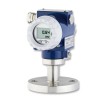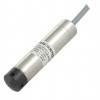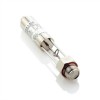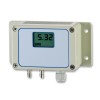PVC is a widely used plastic which is cheap to produce and hard enough to be used as a component parts construction material.
PVC in a plasticised form is a softer, more flexible material, and is used to manufacture coatings, fabrics and linings.
PVC is durable, weatherproof and is a good electrical insulator, hence its use as a outer coating for electrical signal cables on pressure sensors.
PVC can be used to manufacture the process connections and housings for pressure sensors which are designed to be used with acidic and alkali solutions, which would otherwise cause metal equivalents to corrode and fail.
PVC has good resistance to alcohols, ammonia, antifreeze, beer, fruit juices, freshwater, seawater, chlorinated water, detergents, diesel, fuel oils, gasoline, kerosene, hydraulic oil, hydrochloric acid and sulphuric acid.
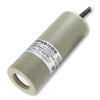 2m range 0.6% conc. chlorine liquid level sensor
2m range 0.6% conc. chlorine liquid level sensor High sulphuric acid content resistant 16 bar g 4-20mA water pressure sensor
High sulphuric acid content resistant 16 bar g 4-20mA water pressure sensor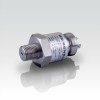 Trichloroethylene compatible 100 mbar Ex pressure transmitter
Trichloroethylene compatible 100 mbar Ex pressure transmitter Chlorine dioxide (ClO2) resistant 20 bar pressure sensor
Chlorine dioxide (ClO2) resistant 20 bar pressure sensor
Glossary of Media Compatibility technical terms
- Al2O3
- Bonded Seal
- Dry Cell
- Dry/Dry
- EPDM – Ethylene Propylene Diene Monomer
- FEP – Fluorinated Ethylene Propylene
- FFKM – Perfluoroelastomer
- FKM – Fluoroelastomer
- Food Grade
- IP Ratings
- PUR, PU – Polyurethane
- Stainless Steel Pressure Sensors
- Wet/Dry
- Wet/Wet
- Wetted Parts

